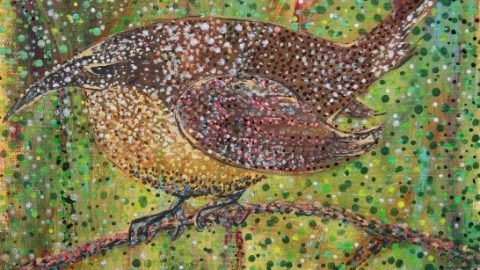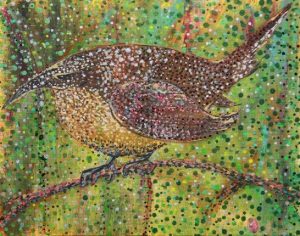Student Programs Update – National Reconciliation Week

This week, the Senior School Celebrated a Virtual Reconciliation Week. National Reconciliation Week (NRW) is a time for all Australians to acknowledge our shared histories, cultures, and achievements, and to explore how each of us can contribute to accomplishing reconciliation in Australia.
The NRW officially runs from 27 May to 3 June each year. These dates commemorate two significant milestones in the reconciliation journey:
- The successful 1967 referendum, and
- The High Court Mabo decision.
NRW originated as the Week of Prayer for Reconciliation in 1993 (the International Year of the World’s Indigenous Peoples) and was supported by Australia’s major faith communities. In 1996, the Council for Aboriginal Reconciliation launched Australia’s first NRW. Reconciliation Australia was established in 2000, to continue to provide national leadership on reconciliation, and in the same year, approximately 300,000 people walked across Sydney Harbour Bridge as part of NRW, to show their support for reconciliation.
What is reconciliation?
For Aboriginal and Torres Strait Islander peoples, Australia’s colonial history is characterised by devastating land dispossession, violence and racism. Over the last half-century, though many significant steps towards reconciliation have been taken.
Reconciliation is an ongoing journey that reminds us that while generations of Australians have fought hard for meaningful change, future gains are likely to take just as much effort, and it takes all of us to work together to make this happen.
In a just, equitable and reconciled Australia, Aboriginal and Torres Strait Islander children will have the same life chances and choices as non-Indigenous children, and the length and quality of a person’s life will not be determined by their racial background.
At St Catherine’s School, through our Reconciliation Action Plan we acknowledge reconciliation is a journey for all Australians – as individuals, families, communities, organisations and importantly as a Nation. At the heart of this journey are relationships between the broader Australian community and Aboriginal and Torres Strait Islander peoples.
Reconciliation Action Plan
Over the past nine months, St Catherine’s School has committed to creating a Reconciliation Action Plan. A committee of staff, students and community members have undertaken the task of creating this Action Plan for our School and the wider community. They have made the following commitments to:
- Truly engage with, and learn from, Aboriginal and Torres Strait Islander people, communities and organisations, ensuring our Aboriginal and Torres Strait Islander Communities have a respected and acted upon voice.
- Embed Indigenous cultures and knowledge into St Catherine’s School’s teaching and learning, and engagement activities.
- Be united as a community that is inclusive and understanding of the Aboriginal and Torres Strait Islander Communities.
- Demonstrate an understanding of, and deep respect for, the traditions, heritage, history and generational impact, knowledge and perspectives of the many nations and language groups that make up Australia.
- Reflect Indigenous cultural heritage in the School’s physical environment, including Indigenous plants.
- Ensure that our School has a place where Indigenous people feel culturally safe and are treated with dignity and respect.
 The Reconciliation Action Plan Committee are working together to complete our Plan by the end of 2020. We have been able to action many parts of this already, including a Welcome to Country and an Acknowledgement at the start of gatherings at School and off site.
The Reconciliation Action Plan Committee are working together to complete our Plan by the end of 2020. We have been able to action many parts of this already, including a Welcome to Country and an Acknowledgement at the start of gatherings at School and off site.
What is the difference between a Welcome to Country and An Acknowledgement?
A Welcome to Country is a traditional ceremony that Welcomes Visitors and offers safe passage. A Welcome to Country occurs at the beginning of a formal event and can take many forms including singing, dancing, smoking ceremonies or a speech in traditional language or English. A Welcome to Country is delivered by Traditional Owners, or Aboriginal and Torres Strait Islander people who have been given permission from Traditional Owners, to welcome visitors to their Country.
Protocols for welcoming visitors to Country have been a part of Aboriginal and Torres Strait Islander cultures for thousands of years. Despite the absence of fences or visible borders, Aboriginal and Torres Strait Islander groups had clear boundaries separating their Country from that of other groups. Crossing into another group’s Country required a request for permission to enter. When permission was granted the hosting group would welcome the visitors, offering them safe passage and protection of their spiritual being during the journey. While visitors were provided with a safe passage, they also had to respect the protocols and rules of the land owner group while on their Country.
An Acknowledgement of Country is an opportunity for anyone to show respect for Traditional Owners and the continuing connection of Aboriginal and Torres Strait Islander peoples to Country. It can be given by both non-Indigenous people and Aboriginal and Torres Strait Islander people.
 The St Catherine’s Acknowledgement
The St Catherine’s Acknowledgement
We would like to acknowledge the Wurundjeri and Bunurung people of the Kulin nation who are the traditional custodians of the land on which we meet today. We would also like to pay respect to the Wurundjeri and Bunurung Elders, past, present, and emerging and extend this respect to Aboriginal and Torres Strait people from other communities who are here today.
Celebrating Reconciliation Week is part of our Reconciliation Action Plan. I encourage you and your family to make time to discuss and learn more about Reconciliation Week.


